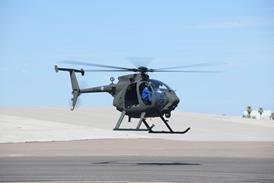Boeing could obtain board approval to offer airlines a new ultra-long-range - more than 14,800km (8,000nm) - derivative of the 747 as early as May 1998, if it can attract sufficient market interest, particularly from key Asia-Pacific airlines including Cathay Pacific Airways, EVA Airways of Taiwan and Qantas.
The derivative is being offered as an alternative to the planned 777-200X/300X growth twinjet in efforts to head off growing competition from the 378-seat, 13,900km-range Airbus A340-600. Boeing says that it "-will spend six months or so talking to customers and, at that point, we will be thinking about obtaining authority to offer".
The "low-risk" study aircraft has been referred to as the 747-200X, but will ultimately be classed as a -400 derivative. It differs from most previous -400X derivatives in offering the original upper deck of the -200B - "-we will basically take the -400 Freighter and fill it with passengers and get more range", says Boeing.
The new 747 will offer a range in the order of 14,800km, which is more than sufficient to operate non-stop between Hong Kong and New York. The aircraft could accommodate between 355 and 380 passengers, depending upon the final configuration.
Maximum take-off weight (MTOW) increases over and above the 747-400's standard 396,900kg have been discussed. They range from 399,500kg to as high as 413,100kg, above which modifications would need to be made to the aircraft's vertical and horizontal stabilisers.
Deciding factors still under study are the need for additional thrust and the extent to which the aircraft's landing gear will have to be strengthened or redesigned to accommodate the extra weight. To minimise costs, airlines are pressing for commonality with the existing generation of 747-400 powerplants and to avoid the adoption of non-interchangeable landing gear.
Structurally, the new aircraft will incorporate the strengthened wing of the 747-400F, local body strengthening, and the -100/200's shorter upper deck, which saves weight. The additional MTOW margin will be used to carry up to three auxiliary centre fuel tanks.
Source: Flight International























